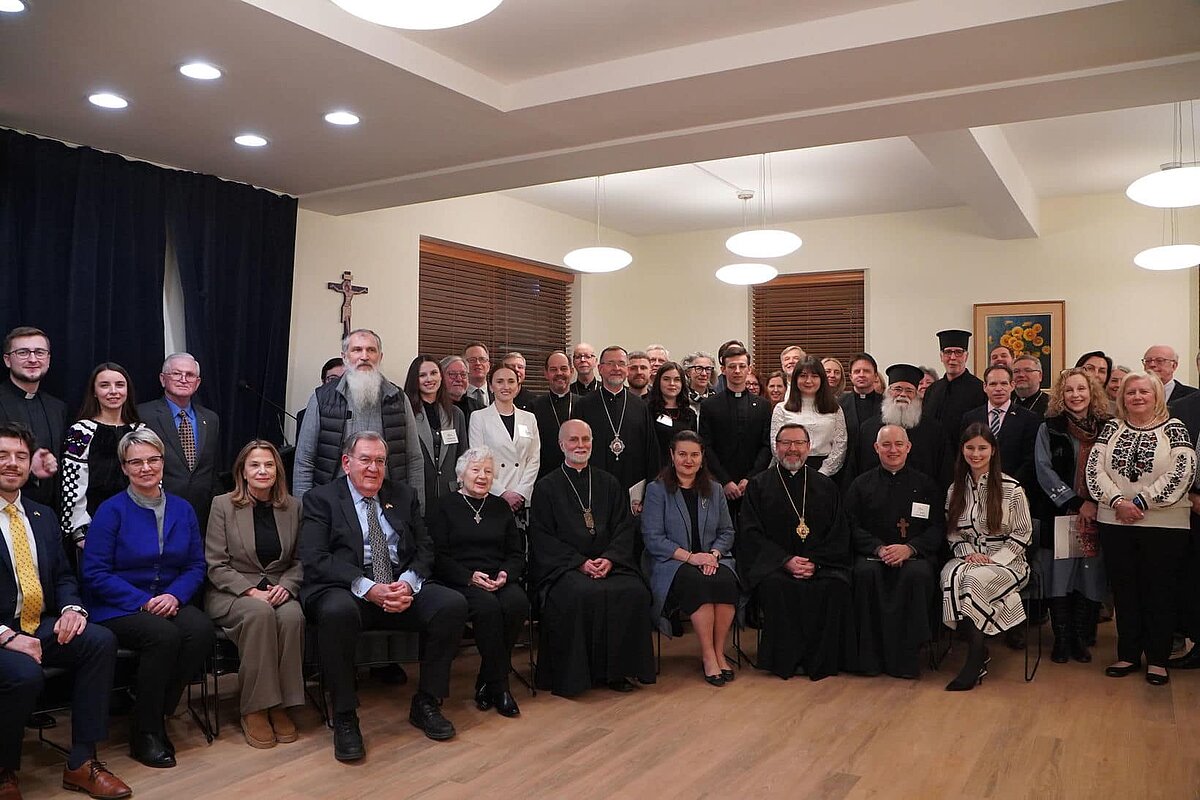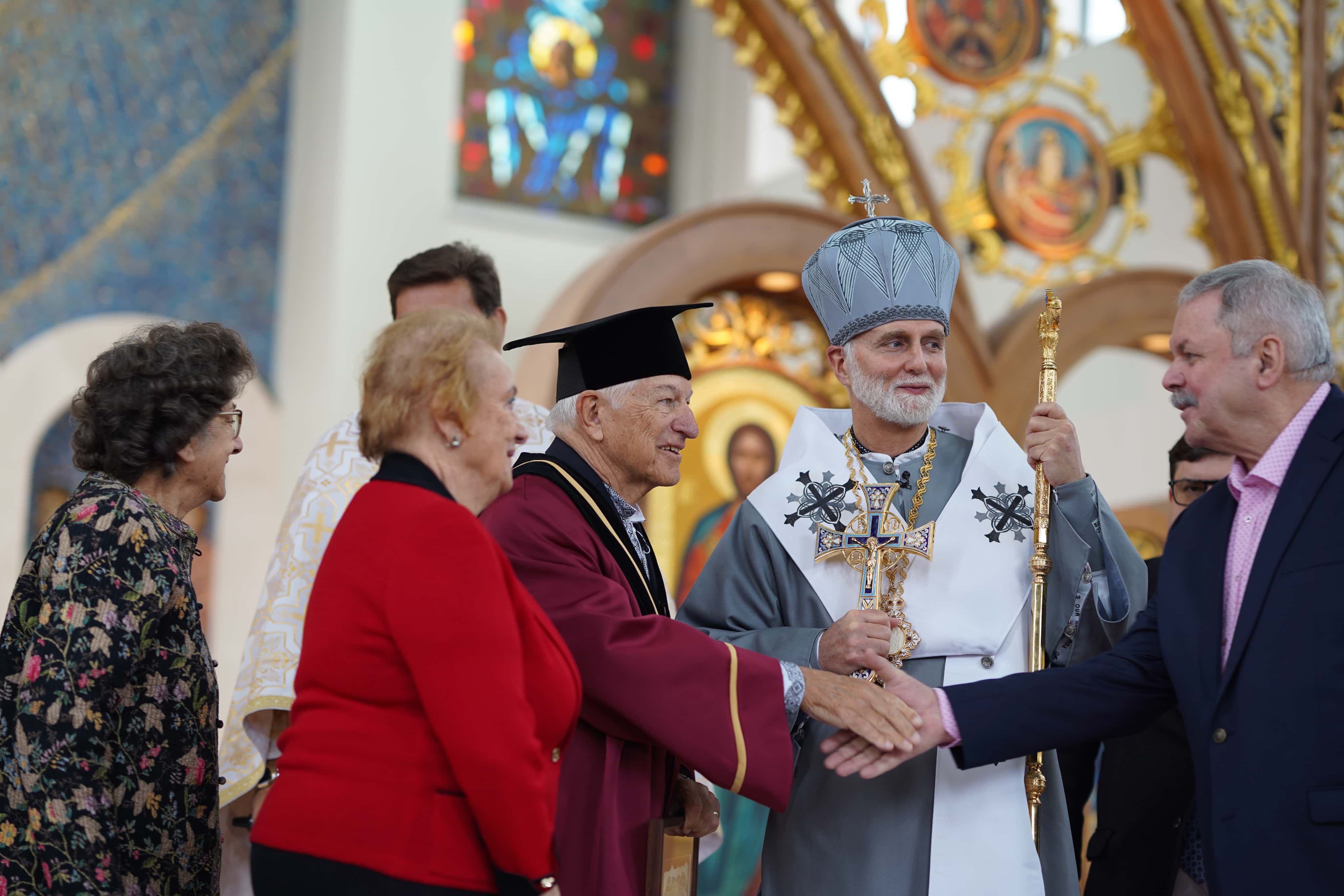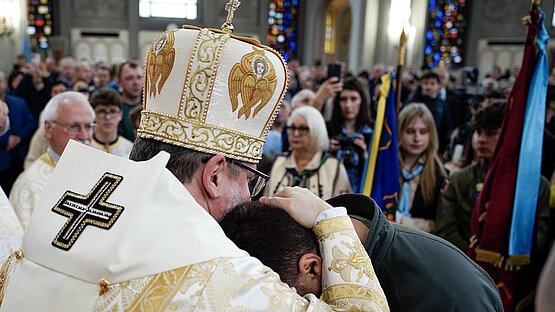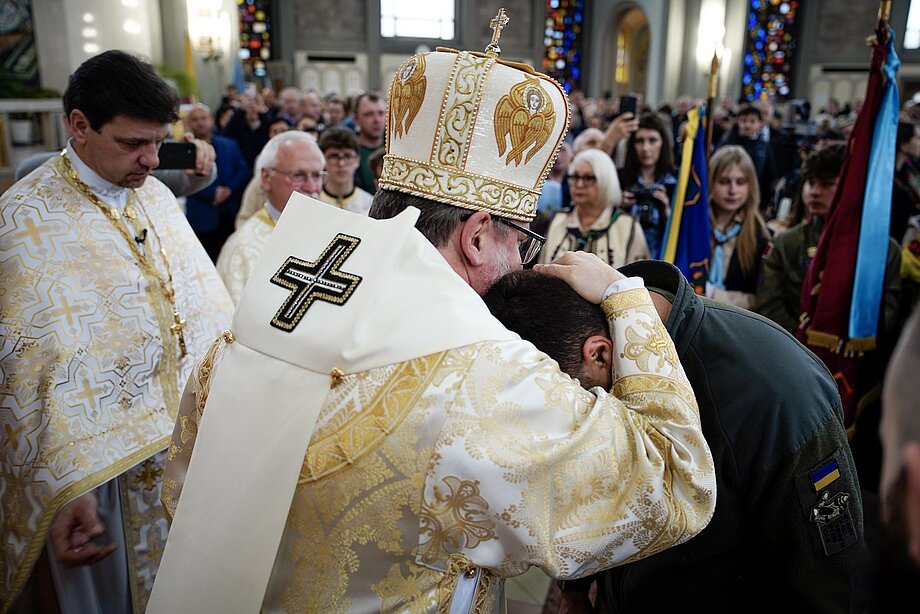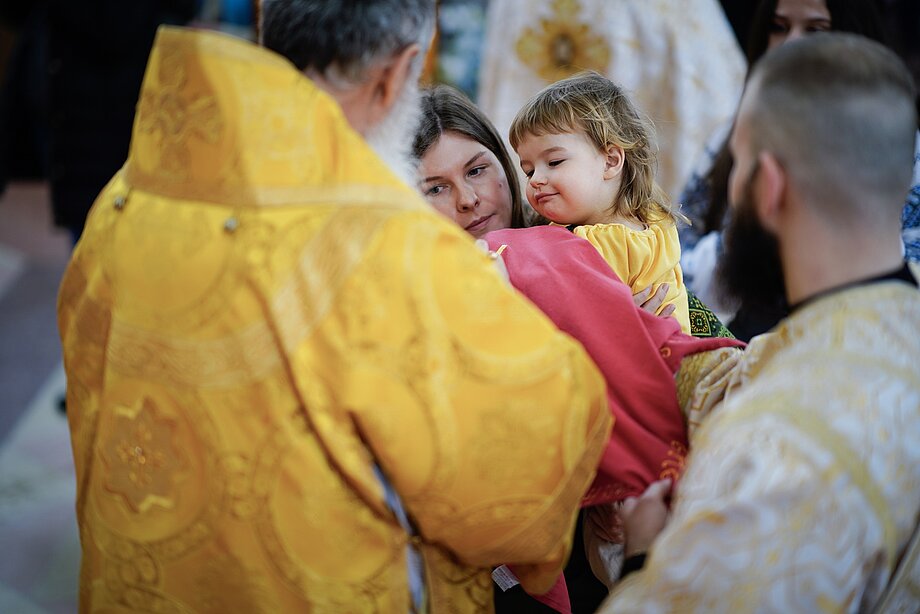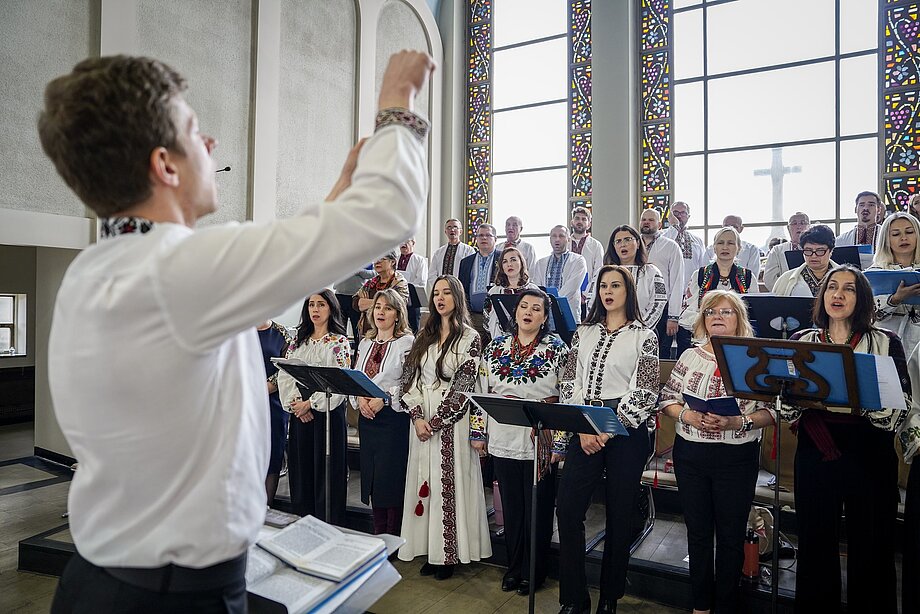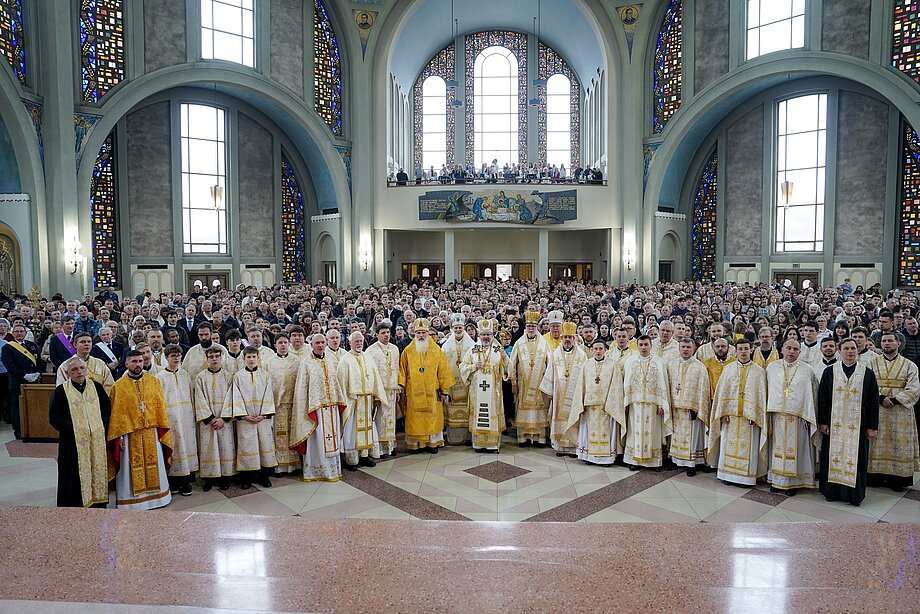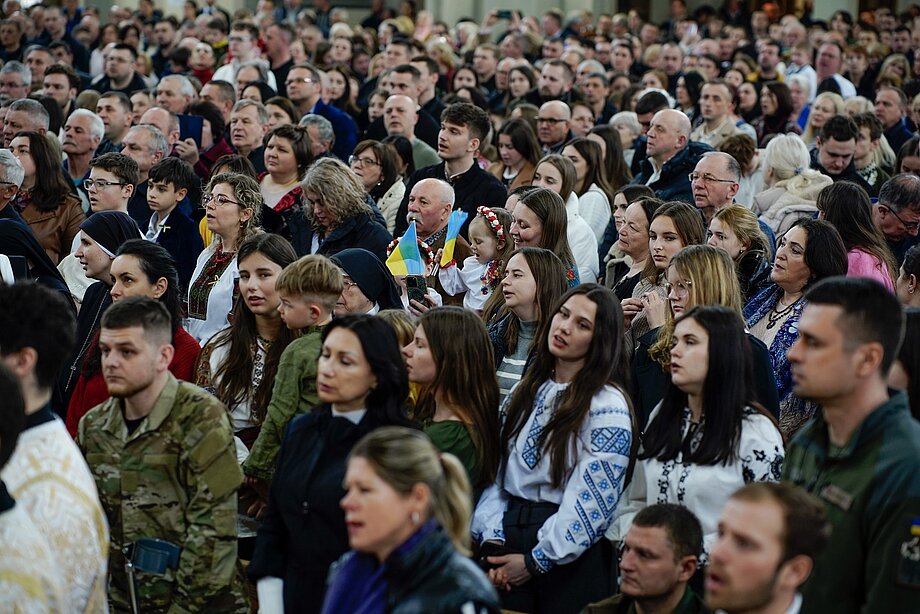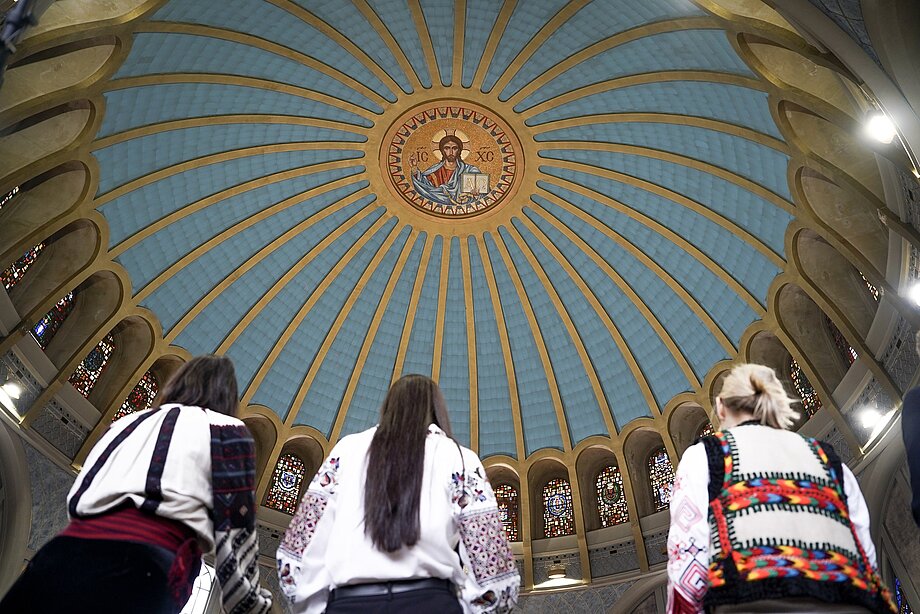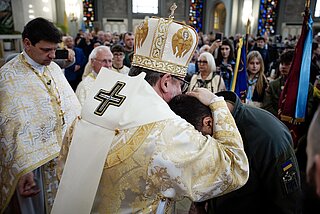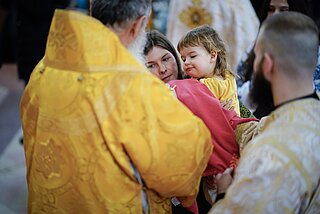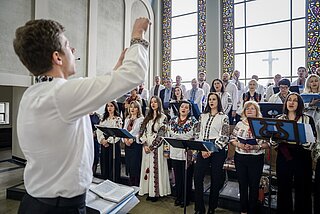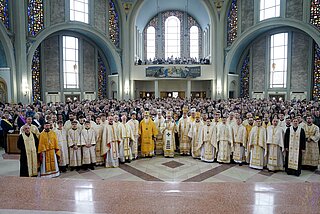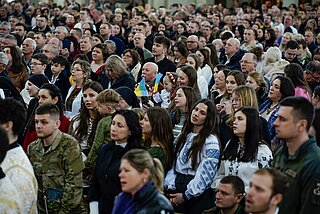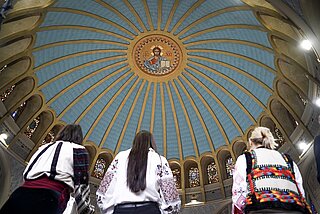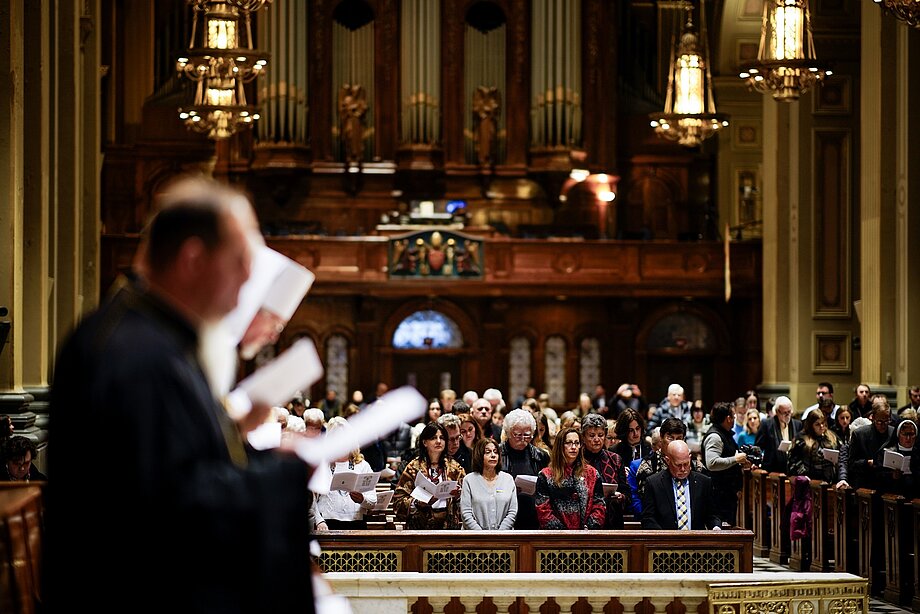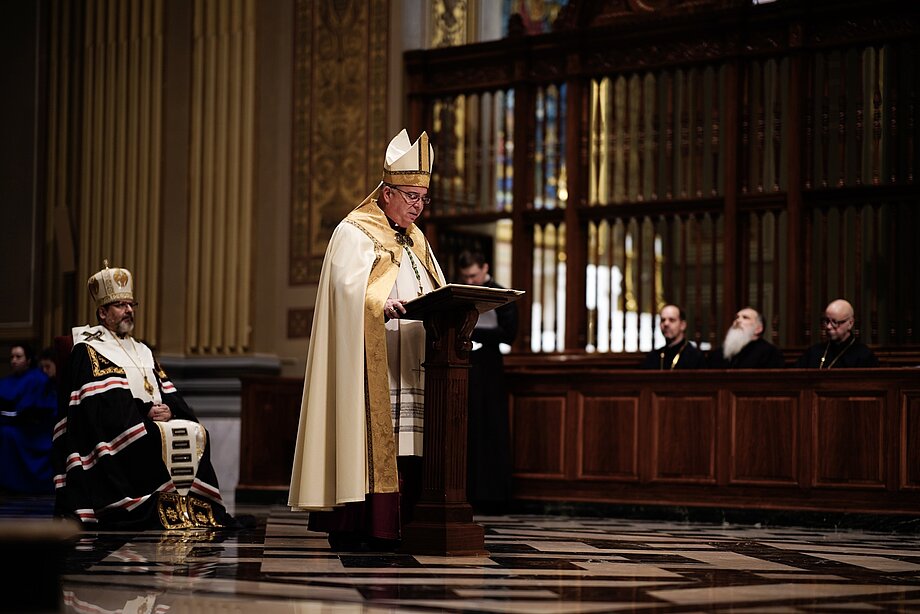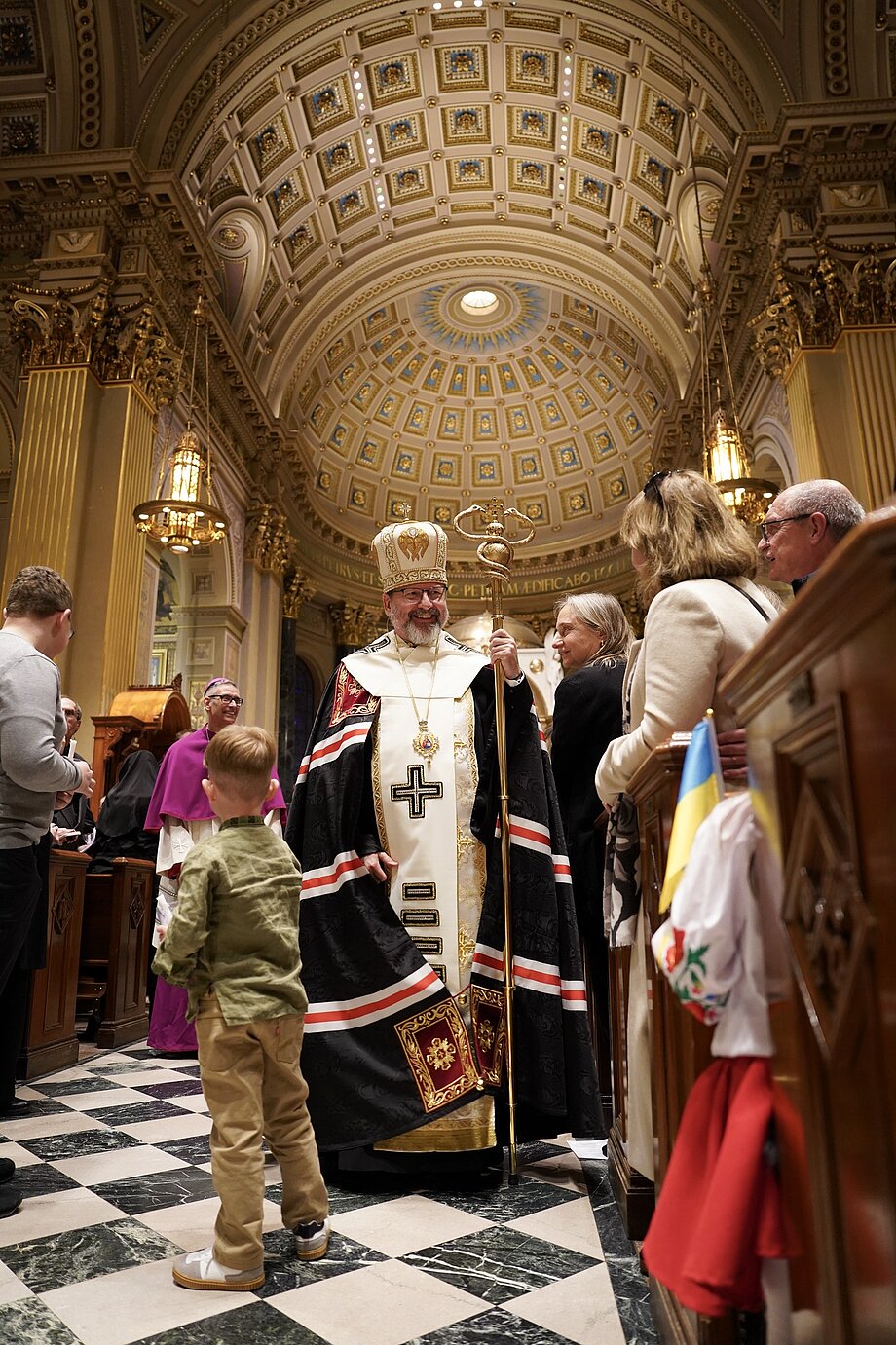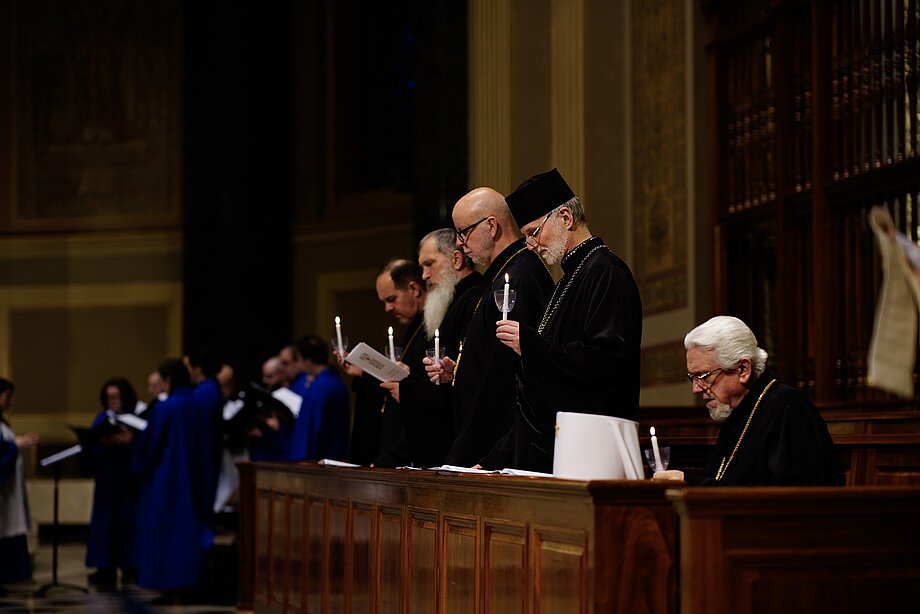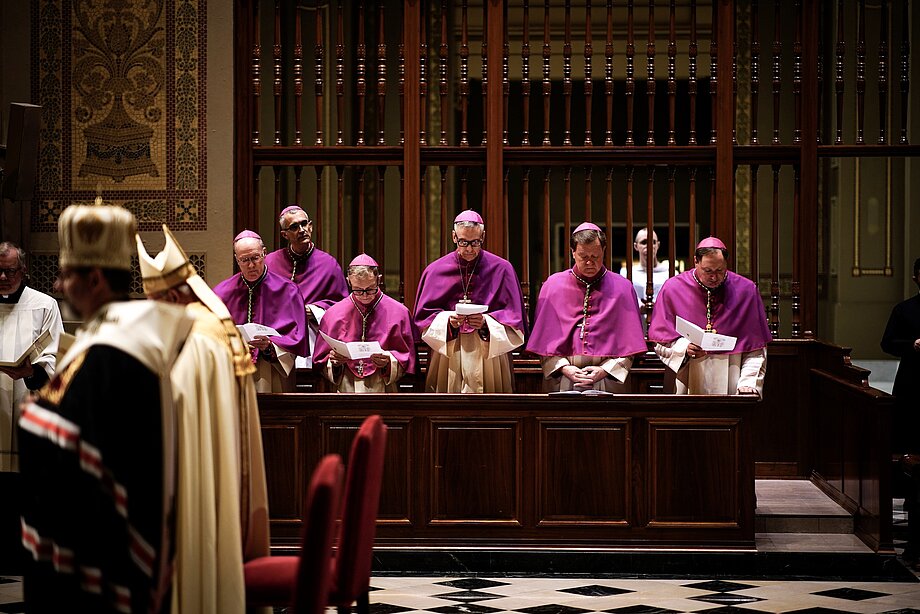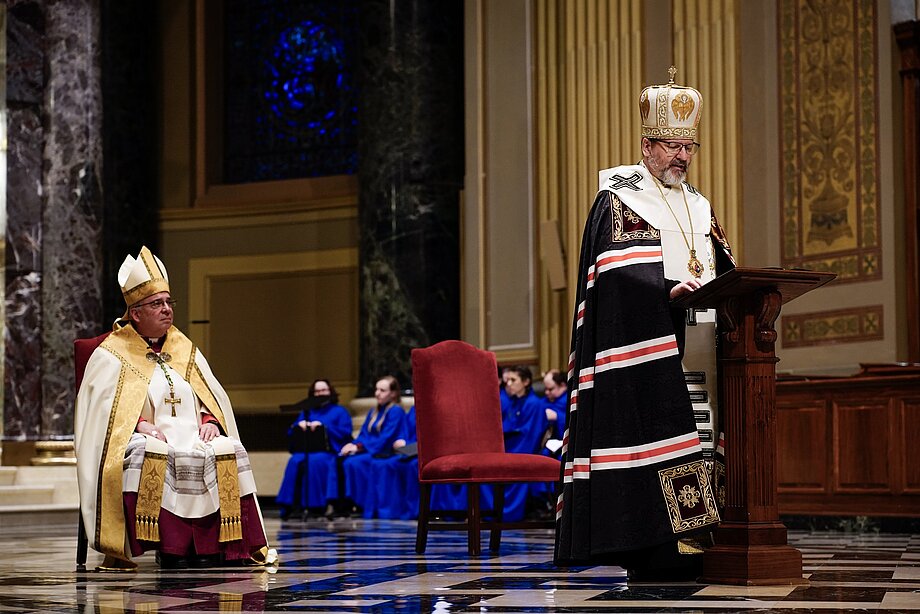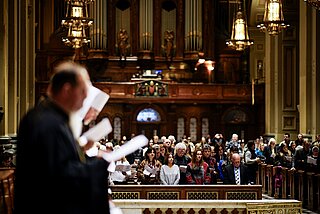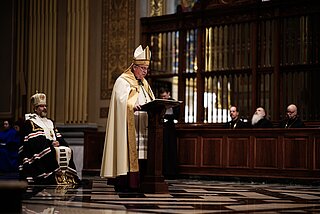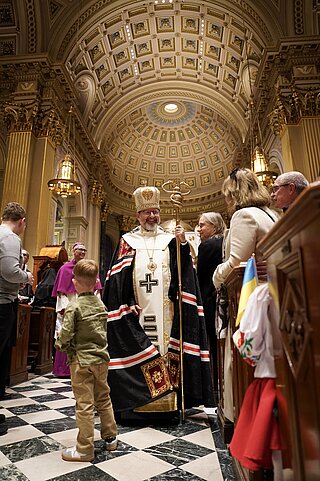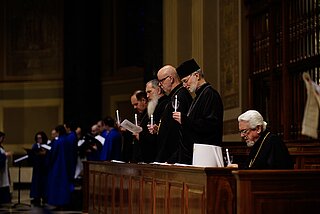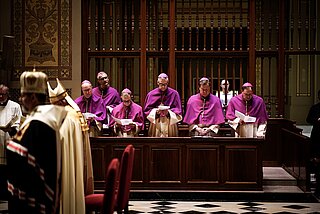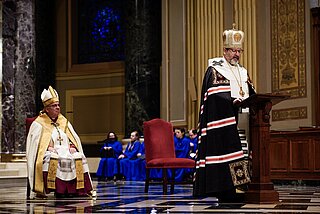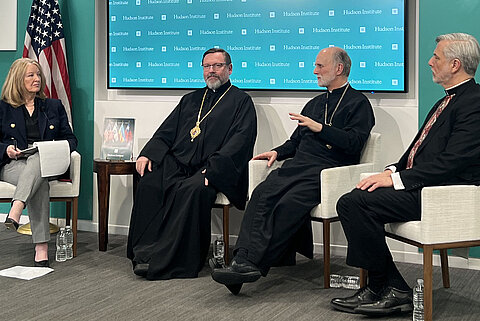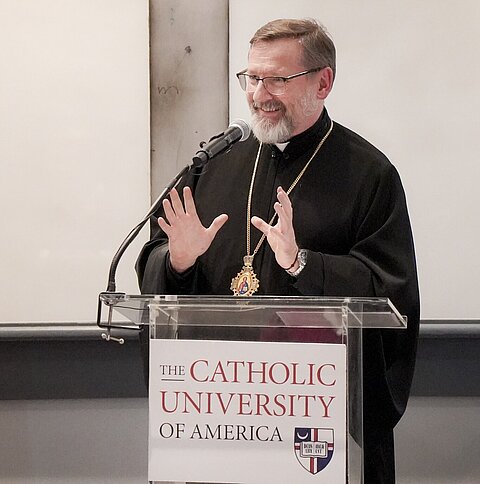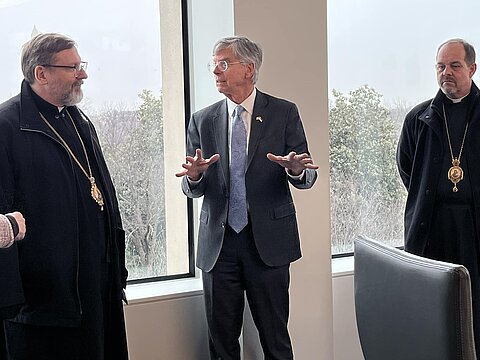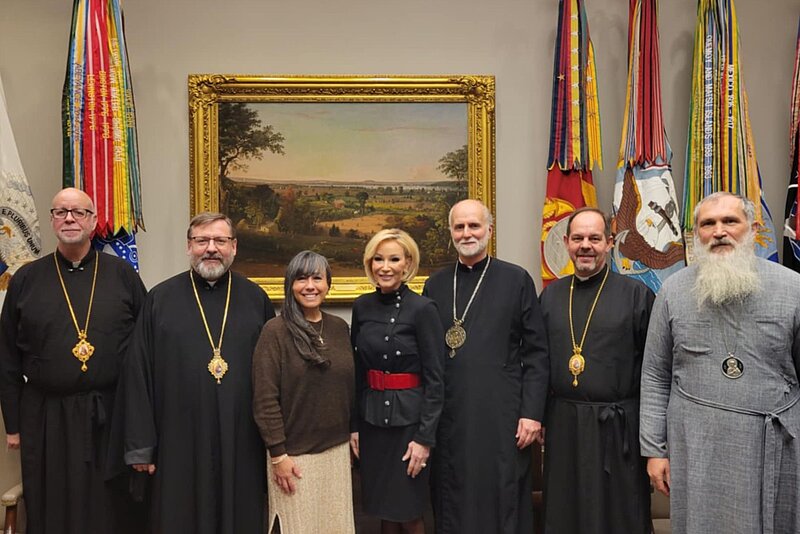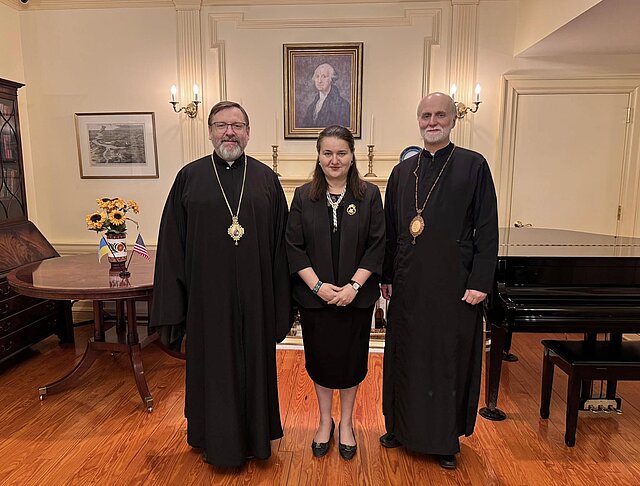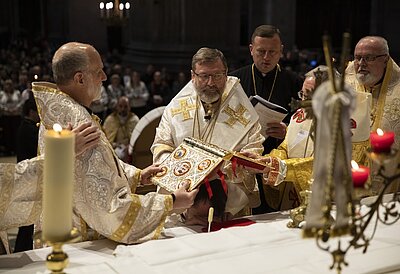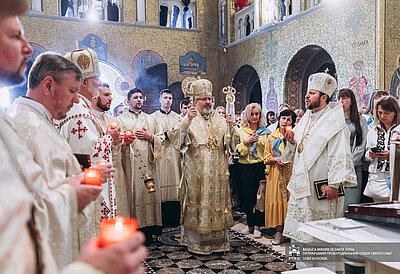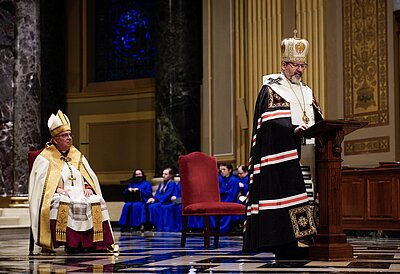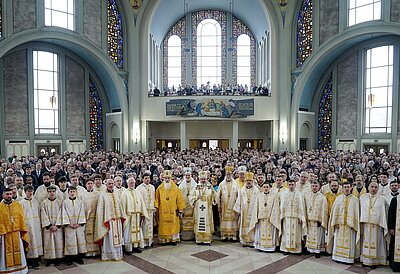- Christmas Appeal 2025
- Archeparchy
- Our faith
- Offices and ministries
- News
- Events
- Parishes
- Youth Protection
Faith, Diplomacy, and Unity: Key Takeaways from His Beatitude Sviatoslav’s U.S. Visit
On February 21, His Beatitude Sviatoslav Shevchuk concluded his pastoral visit to the United States, particularly to the Archeparchy of Philadelphia. Throughout the visit, which lasted from February 14 to 21, he was accompanied by the bishops of the Ukrainian Greek Catholic Church in the U.S.: Metropolitan Borys Gudziak (Archeparchy of Philadelphia), Bishop Paul Chomnycky (Eparchy of Stamford), Bishop Bohdan Danylo (Eparchy of St. Josaphat in Parma), and Bishop Venedykt Aleksiychuk (Eparchy of St. Nicholas in Chicago). Before departing for Canada, the Father and Head of the UGCC shared his reflections and conclusions.
"Our pastoral visit to America took place at an exceptionally significant moment. When planning it, we could not have foreseen its profound meaning for America, Ukraine, the entire world, and our Church. It felt as though Divine Providence had led us here at this precise time.
One of the most spiritually moving events was the Divine Liturgy on February 16 at the Cathedral of the Immaculate Conception in Philadelphia. Such a large-scale pilgrimage had not been seen in America for a long time. Many people gathered to take part in this spiritual journey. The hundreds of confessions, conversions, and spiritual healings that took place over these days testified to the deep need of our people—especially newly arrived Ukrainians—for the living touch of the Mother Church. For nearly two hours after the Liturgy, I bestowed blessings upon the faithful. How greatly they needed it! How fervently they drew near! It was a living image of the Parable of the Prodigal Son, which we read that day, meditating on the Father's embrace that heals, renews, and gives life.
Another significant event was the interfaith prayer for peace in Ukraine, held on February 16 at the Cathedral Basilica of Saints Peter and Paul in Philadelphia. This moment allowed us to step beyond the Ukrainian community and address the broader Catholic society in America. The prayer service was broadcast live on EWTN, allowing millions of people across the United States and beyond to join in prayer.
“Praying alongside the bishops, clergy, and faithful of the Roman Catholic Church was a powerful witness of solidarity. The Catholic Church in America has shown unwavering support for Ukraine, and this was clearly felt.”
A key aspect of the visit was engaging with American intellectual circles. We held meetings at The Catholic University of America, the United States Institute of Peace—a government institution focused on peacebuilding—and the Hudson Institute, where we discussed religious freedom in Ukraine. Some of these discussions were streamed online, attracting responses from around the world—from the United States and Canada to Singapore and South Africa. Representatives of various denominations closely followed these events, especially as Ukraine once again became a focal point of global attention.
It was also crucial to convey the truth to the general public. I gave a series of interviews in Ukrainian, English, and Spanish—speaking with both Catholic and Protestant media. In an interview with the CBN network, which reaches a broad Protestant audience, I emphasized that for all religious communities and denominations, Ukraine represents freedom of worship, whereas Russian occupation brings destruction, suppression, and an underground Church—just as it was under the Soviet regime.
Meetings with U.S. government institutions were also significant, particularly with the Trump administration. We were the first Ukrainian delegation to visit the White House after the president’s inauguration and the first delegation to meet with the newly established Office of Faith. Our meeting with its director, Paula White-Cain, took place in the Roosevelt Room, adjacent to the Oval Office. The fact that this office was granted such a high status underscores the importance the current administration places on matters of religion and religious freedom.
During our conversation, I appealed to Ms. White-Cain on behalf of imprisoned Protestant pastors. Through the mediation of the Holy See, we had been able to secure the release of two of our priests, but Ukrainian Protestants, who are currently held captive in Russian prisons, lack such support. I proposed providing precise data on these imprisoned individuals so that the U.S. administration could exert pressure on Russia for their release. We hope this meeting will yield positive outcomes. Paula White-Cain called it the beginning of cooperation, recognizing that the Catholic Church could serve as a crucial institutional partner, a source of reliable information to properly inform President Trump and assist him in making decisions regarding religious freedom in Ukraine.
Our visit concluded with a family-like gathering at the Embassy of Ukraine. During three days of intense political upheaval in Washington, we offered spiritual support to our diplomats. It so happened that, in various capacities, we interacted with them daily throughout our visit. A particularly moving moment was the closing prayer at Holy Family Church on February 18, when we sang 'Lord, oh the Great and Almighty' together. I could see how this prayer strengthened Ambassador Oksana Markarova and her team.
A noteworthy event was also the launch of a diplomatic training program for Church representatives at the St. Gabriel Institute, based at St. Josaphat Seminary in Washington. I hope that as we depart, a group of well-educated young people will carry forward the momentum we initiated. They will use this increased attention to Ukraine, and particularly to our Church, to continue conveying the truth about Ukraine, defending our national interests, and helping to restrain Russian aggression—so that a just, genuine, and lasting peace may finally reign in Ukraine."
